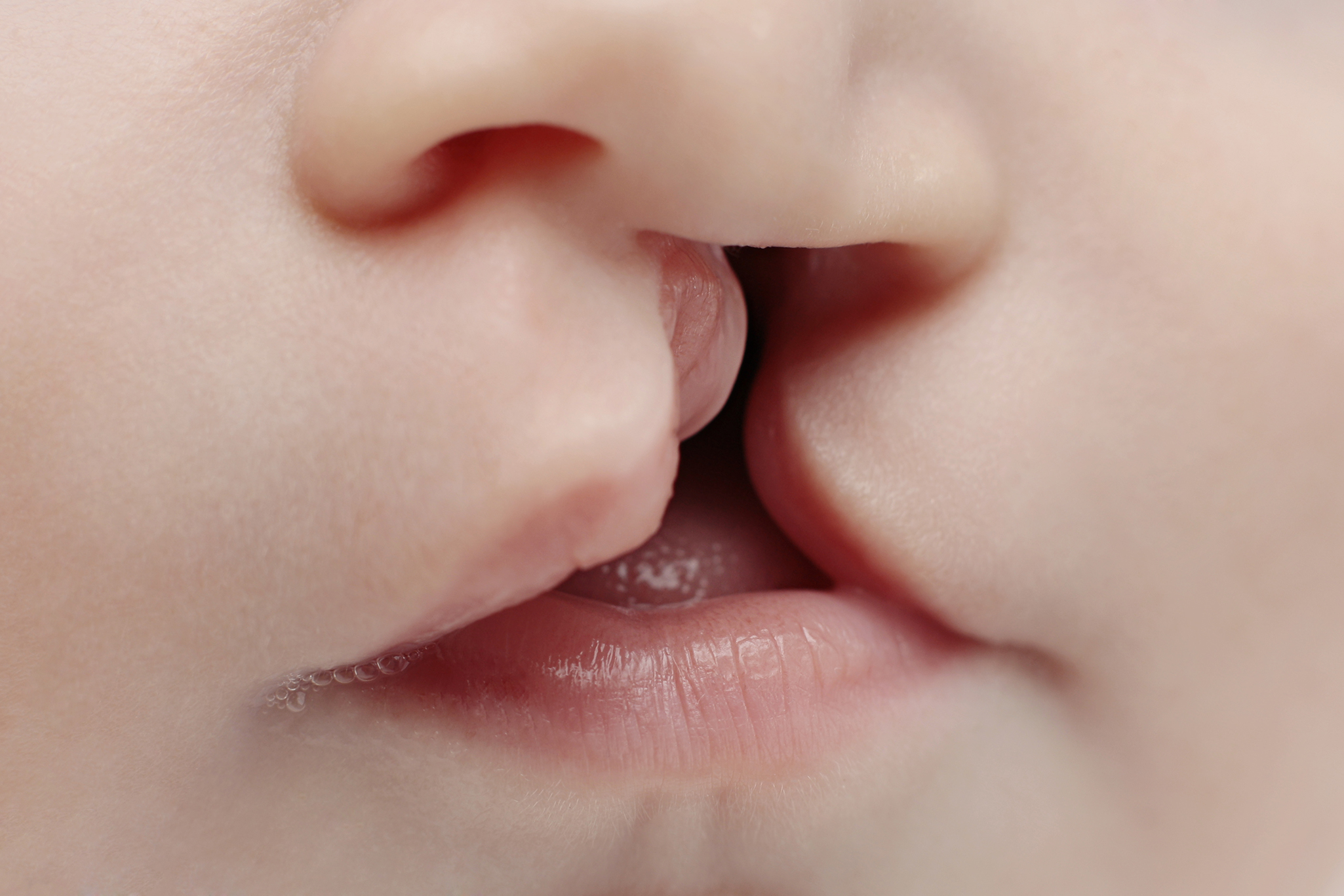Cleft palate forms during the first weeks of the baby growing in the mother. Two sides of the
face don’t fuse, resulting in a gap in the mouth’s roof. Cleft lip and cleft palate in newborn
babies are among the most common facial deformities among babies in the United States,
affecting one of every 600 newborn babies, while an isolated cleft palate is less common at one
in every 1000 newborn babies.
The babies with a cleft may only have a cleft lip, a cleft palate, or both a cleft palate and a cleft
lip. The orofacial clefts are considered one of the most common congenital craniofacial
differences worldwide.
Babies born with cleft palate can also have a visible gap in their upper lip, also known as cleft
lip. As mentioned earlier, it is a fairly common occurrence, and there’s no apparent reason why
it occurs. So, if you’re wondering why a child is born with a cleft palate – there’s no single
answer.
However, there are a few factors that play a minor role in increasing the risk of having a cleft
palate or cleft lip, including:
- Maternal Alcohol & Drug Consumption
- Genetics and Family History
- Maternal Smoking
- Maternal Malnutrition During Gestation
- Use of some medicines, e.g.: anti-seizure medicines, during the gestation period
- Exposure to some chemicals
So, is there a cure for cleft palate and cleft lip?
The answer to preventing a cleft is NO, but treatment is very effective. This condition is
common (1/600 live births) and prompt treatment is the standard of care. Let us go ahead and
discuss what to do when your child has a cleft lip or palate and what to expect.
What Problems Can Cleft Lip and Cleft Palate Cause?
This condition can cause various problems for the child, including:
- Feeding
- Optimal Development & Growth
- Hearing issues
- Ear Infections
- Teeth and jaw disturbances
- Speech Development
Correcting the condition during childhood with surgery is essential for the overall wellbeing and
development of the child. Care is given with a team of doctors, nurses, speech therapists,
hearing specialists, geneticists, dentists, and more. An accredited team from the American Cleft
Palate Association is recommended in the USA, while other regions have their own
accreditations.
When Is A Cleft Palate and Cleft Lip Diagnosed?
Typically, the condition is identified as soon as the child is born during the first newborn
examination. At times, the cleft palate and cleft lip are also identified during prenatal
ultrasound.
In the absence of a cleft lip, identifying a cleft palate can get harder with the 20-week
ultrasound. This is why newborn examination becomes crucial when the doctor examines the
inside of the newborn’s mouth.
Why Cleft Lip and Cleft Palate Should Be Treated Immediately?
As mentioned earlier, there are many issues that a child can face when cleft lip and palate are
left untreated. Let us have a closer look at these problems and understand why this condition
should be treated right away.
Difficulty Feeding
Feeding cleft lip and palate infants can get difficult if not treated. Having a cleft palate and lip
makes it difficult or even impossible for babies to breastfeed or suck from bottles. For feeding
through suckling, babies need to compress the nipples of the breast or bottle against the
mouth’s roof and create sufficient suction to draw milk. This process is entirely compromised
with the cleft palate/lip as suction isn’t created due to air inflow, and liquid may leak out into
the nose.
Parents can use specially made feeding devices with a valve system that acts as a palate for
proper feeding till corrective surgery is performed.
Speech Issues
The palate primarily functions as a valve system to stop air from leaking through the nose while
the person speaks. It makes treating children with cleft lip and palate during infancy nonoptional. When children with this condition are not treated earlier, they may develop speech
problems and have difficulty speaking later.
Other than “m,” “n,” and “ing,” all other consonant sounds we make while speaking requires
some degree of pressure created in the mouth. However, this won’t be possible in the presence
of a cleft palate, making its treatment extremely important.
Psychological & Social Problems
Speech difficulty and facial deformity will inevitably lead to psychological and social dilemmas
for the patient. A child with a cleft lip and palate may admit to some bullying or children making
fun of their craniofacial difference in public places, schools, colleges, and the local community.
These acts can hurt the child’s self-esteem and self-confidence.
Reading the book or watching the movie “Wonder” can be a helpful way for a family to start to
think of how to provide support for these amazing kids.
What Does Cleft Palate and Cleft Lip Surgery Require?
Surgery is an important attribute of the cleft treatment for children born with cleft palate and
cleft lip. Often parents seek answers to one of the most common questions: What age do you
repair a cleft palate?
The repair through surgery is done during infancy, when a child is three to four months old for
cleft lip. In the case of just cleft palate, the surgery is done when the child is just a year old.
The Cleft Lip and Cleft Palate Surgery goals include improving facial aesthetics, eliminating any
potential or imminent speech-related issues, and remedying feeding issues. One of the goals
during cleft lip surgery is to reduce the appearance of scarring as much as possible. To ensure
this, the surgeons try to mirror the appearance of the child’s face without the cleft lip. It helps
with:
- Increasing the lip’s length to look natural
- Even out the red color portion of the lip without any palpable differences
- Smoothen any nose deformity and hide any scars between the upper lip and nostril. It should help improve the symmetry between the nose and upper lips.
Cleft Treatment and Timing
Parents often look for basic crucial cleft lip and palate information: Is there a cure for cleft
palate? At what age do you repair cleft palate? Are cleft treatment and surgery safe? And so on.
However, the treatment for children with cleft lip and palate can vary from child to child. The
doctors assess the child with cleft and explore various treatment and surgical options based on
in-depth examination and screening of the child’s health.
The treatment depends on the severity of the cleft, the child’s age, and if there are other health
concerns that may interfere with cleft treatment and surgery.
What other Surgeries Children with Cleft may Require in the Future?
Some children with cleft lip and palate may require additional surgeries as they get older. It
includes:
- Speech Surgery
- Alveolar Bone Grafting (repairing the teeth gum line)
- Nose Surgery (rhinoplasty)
- Orthognathic Surgery (jaw advancement surgery)
Cleft treatments have advanced and become safer, and most surgeries occur successfully
without any lasting side effects or problems. However, it is important to choose a surgeon who
is experienced and specializes in conducting surgeries for cleft lip and palate.
As parents, you want nothing but the best for your child, so educate yourself about cleft lip and
palate. Research extensively to find a doctor who can perform surgery while creating a custom tailored treatment plan for your child.
All the best to you and your child as you go through this process. We are here to help.

